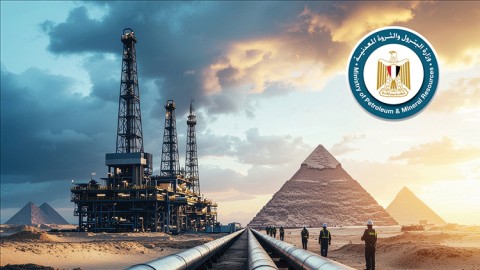In the world of exploration and production (E&P), new technologies are always on the rise looking for a way to maximize hydrocarbon production with efficiency. Remote sensing techniques have been used in the oil and gas industry for quite some time, but not as extensive as geological and/or geophysical surveys. A new study presented by Reza Taheri, Assistant Instructional Professor at the University of Wyoming, and Alan Tait, Adjunct Research Fellow, at the University of Monash, provides a new remote sensing technique, specifically Advanced Spaceborne Thermal Emission and Reflection Radiometer (ASTER), to be used in hydrocarbon production.
The Methodology
This study examines the use of ASTER on existing petroleum reservoirs intending to uncover diagnostic trends that could be used to evaluate virgin territory in the future. Even though oil and gas reserves are deep underground, they have certain markers that can be observed on the surface. Previously, hazy patches on the Landsat Multispectral Scanner (MSS) photos were viewed as a hint to look for oil because of their strong association with current oil and gas fields. The phenomenon, however, fell out of favor because it was never clarified.
This study, however, attempts to classify the surface phenomena, specifically surface temperature, based on ASTER satellite data in the Thermal Infrared (TIR) region of the electromagnet spectrum and examine its relationship with the presence of hydrocarbons in place. The study took place in Iran on 53 onshore fields that produce from the Early Miocene Asmari Limestone and the Cenomanian Sarvak Limestone formations which contain more than 350 billion barrels (bbl) of original oil in place and 250 trillion cubic feet (tcf) of associated gas.
The study depended on two axes; ASTER images which were processed to minimize temperature variations caused by any sources other than the underlying hydrocarbons. That is to illustrate subsurface contributors to geothermal anomalies observed at the surface. The second axis and the main processing approach is Fuzzy logic, which was used to assign weight to the role-playing variables based on their degree of control on the final Land Surface Temperature (LST).
The Results
The processed maps showed that after the removal of all the contributors to LST, the underlying hydrocarbons could be linked to the remaining thermal anomalies, which were reduced by up to 80% in some of the study areas. Even after all of the contributors to LST have been excluded from the equation, the final results have shown that 67.9% of the pixels inside the buffer zones of petroleum reservoirs in the study area are thermally anomalous.
Variograms were also deployed to investigate the continuity of thermal anomalies in different directions within the buffer zones of each of the petroleum reservoirs. The variogram analysis detected the direction of thermal anomalies strongly follows the northwest-southeast (NW-SE) direction, which is the direction along the trend line of elongation axes of petroleum reservoirs.
The research results have shown that by employing ASTER TIR data and removing thermal noises using fuzzy logic, thermal anomalies over the existing oil reservoirs could still be detected. According to the paper, this method proves to be an economically efficient tool to utilize in the early stages of hydrocarbon reconnaissance. The thermal inertia and emissivity of oil-bearing surfaces reflected on the final LST were proved to be direction-oriented. Additionally, a strong spatial correlation between the presence of oil and the detected thermal anomalies was evident in directions along the trend line of elongation axes of petroleum reservoirs.








